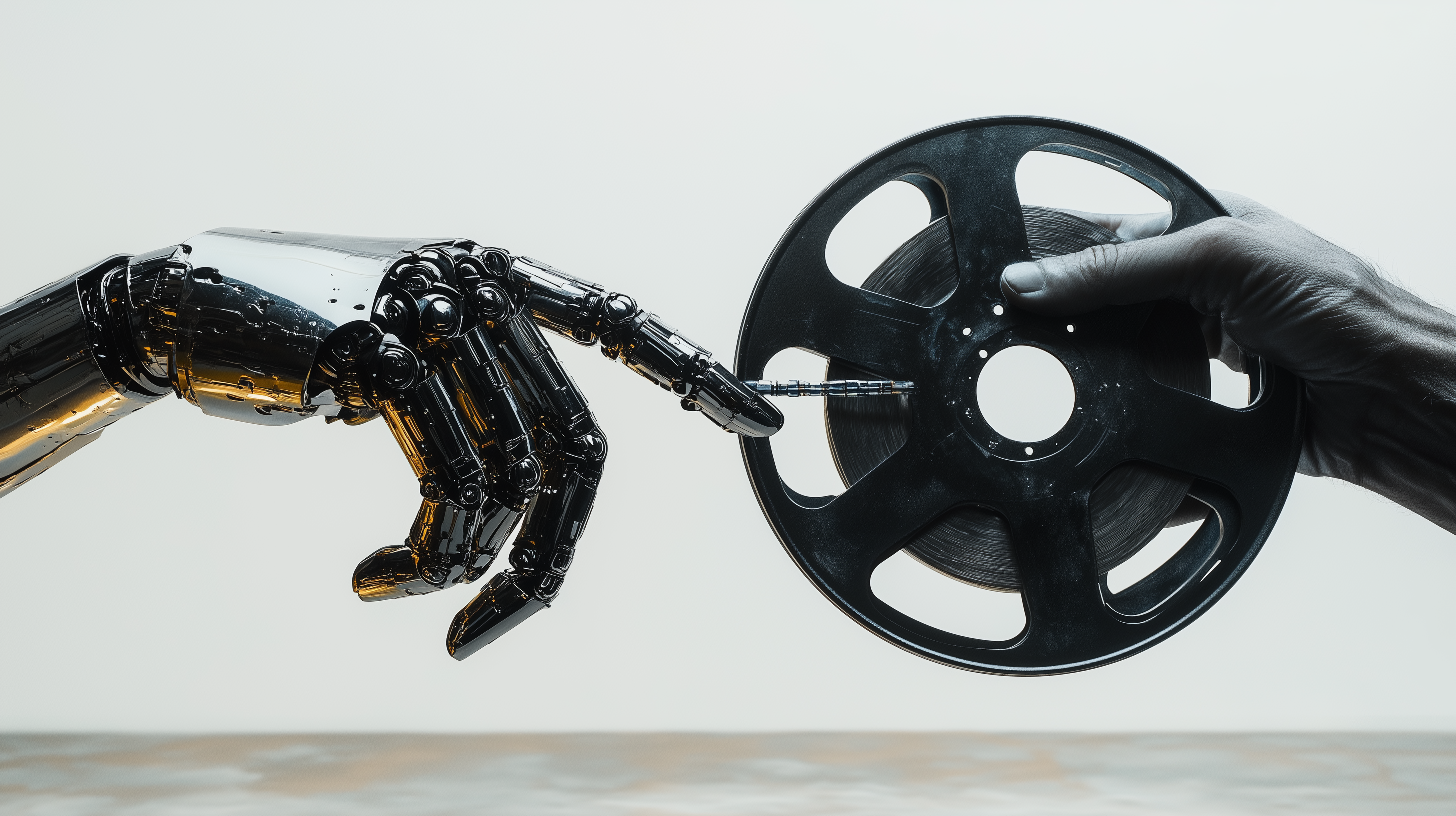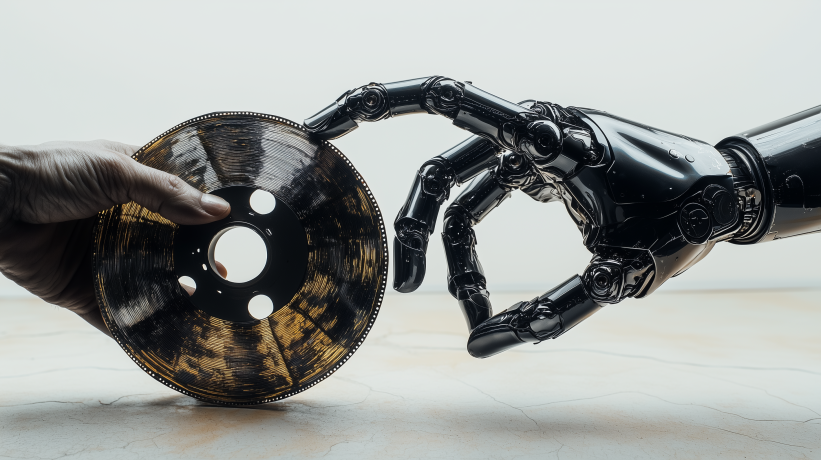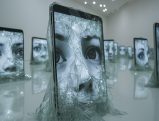
AI-generated content sparks a landmark legal battle between Hollywood and Silicon Valley, challenging the boundaries of copyright law in the digital age. As Blade Runner 2049 producers face off against Tesla and Musk, the outcome could reshape how entertainment IP is protected and leveraged in an AI-driven world.
by LawInc Staff
October 21, 2024
“Blade Runner 2049” producers Alcon Entertainment have sued Tesla CEO Elon Musk, Tesla, Inc. and Warner Bros. Discovery over alleged copyright infringement related to an AI-generated image used in an October 2024 “Robotaxi” product reveal. The litigation raises fascinating questions at the intersection of entertainment IP rights and AI technologies.
This guide breaks down everything you need to know about this landmark case pitting a Hollywood IP owner against arguably the world’s most famous entrepreneur and his Big Tech and auto empire. Understand the facts, the players, the key legal issues, the copyright and false endorsement claims, and the potential fallout as AI collides with entertainment IP in an unprecedented way.
1. Understand the Alleged Infringement
-
- AI-Generated “Blade Runner” Image: Alcon claims Tesla, Musk and WBDI used an artificially generated image closely resembling iconic “Blade Runner 2049” (BR2049) stills in Musk’s October 2024 Tesla Robotaxi reveal presentation.
- Core Copyrighted Content: Alcon alleges the AI-generated “Presentation Slide 2” infringes BR2049’s copyright by copying distinctive elements of the film’s “K explores ruined Las Vegas” scene, a dramatic core of the movie.
- Famous Mark-Level Associations: Alcon claims the infringing image evokes BR2049’s famous mark-level secondary meaning, including specific associations with artificial intelligence and autonomous vehicles.
- Global Livestream Audience: The allegedly infringing image was displayed full-screen for 11 seconds during Musk’s livestreamed Robotaxi remarks, which Alcon says had a massive worldwide reach.
Key Alleged Facts:
-
- The AI-generated “Presentation Slide 2” image depicts a man in a distinctive duster coat surveying an orange-hued post-apocalyptic cityscape, evoking BR2049’s iconic “K explores ruined Las Vegas” scene.
- Musk displayed the image while saying he loves Blade Runner but that future “is not the bleak apocalypse” he wants, though he likes the “duster” the character wears.
- The infringing image appeared for 11 seconds of a presentation pitching Tesla’s AI-powered autonomous “Robotaxi,” which Alcon claims was a bid to affiliate the product with BR2049’s famous brand associations around AI and autonomous vehicles.
- Before the event, Alcon expressly denied Tesla/Musk permission to reference BR2049 and objected to any affiliation between the film and Musk’s companies or products.
Potential Impact:
-
- As a seminal sci-fi film with famous branding around artificial intelligence and autonomous cars, Alcon claims unauthorized affiliations with BR2049 carry huge financial stakes, with past legitimate auto brand partnerships commanding 8-figure fees.
- Alcon alleges the infringement muddies the waters for its ongoing talks with auto brands about partnerships on its in-production BR2049 TV series sequel “Blade Runner 2099.”
- Widespread re-shares of the livestream perpetuate the allegedly false BR2049-Tesla association, which Alcon says is extra fraught given controversies around Musk that clash with its desire not to affiliate with him.
Why It Matters:
-
- This case sits at the cutting edge of applying copyright law to AI-generated content and the alleged misappropriation of entertainment IP for commercial exploitation.
- It highlights the immense value, stakes and sensitivities around unauthorized associations between famous entertainment brands and polarizing public figures/companies.
- Navigating IP rights clearances and control in an age of easy AI reproduction of distinctive copyrighted content is an increasingly critical challenge.
- Brands must consider not just the letter of licensing agreements but the optics and impact of affiliations in today’s hyper-charged media environment.
2. Analyze Alcon’s Copyright Infringement Claims
-
- Direct Infringement: Alcon alleges Musk, Tesla and WBDI directly infringed its exclusive rights to reproduce, prepare derivative works, distribute and publicly display BR2049 copyrighted content without permission.
- Willful & Bad Faith: Complaint claims infringement was willful and in bad faith, exploiting BR2049’s brand power after Alcon expressly denied permission and affiliation.
- Actual & Statutory Damages: Alcon seeks actual damages and profits or alternatively statutory damages up to $150,000 per infringement for alleged willfulness.
- Vicarious & Contributory Liability: Claims also target Musk, Tesla and WBDI for vicarious and contributory infringement based on participation, material contribution and failure to stop infringement.
Direct Infringement Elements:
-
- Ownership of a valid copyright – Alcon has a registered copyright in BR2049
- Violation of an exclusive right – Alcon claims unauthorized reproduction, creation of derivative works, distribution and public display of BR2049 content
- Actual copying – Alleges the “Presentation Slide 2” AI image copied and derived from iconic stills at the dramatic core of BR2049
- Substantial similarity – Argues the AI image captures distinctive visual elements and overall feel of key BR2049 scenes
Likely Key Battlegrounds:
-
- Are the specific BR2049 images allegedly copied protectible expression or unprotectible ideas/scenes-a-faire?
- Is the AI-generated image substantially similar to BR2049 stills or merely inspired by general cinematic cyberpunk aesthetics?
- Was any copying legally fair use – and can fair use apply to commercial exploitation to sell products?
- Did Musk’s comments create an unauthorized derivative work by fashioning a new “Blade Runner” story?
- How to apportion liability among Musk, Tesla and WBDI – who did what and who had control to stop it?
Potential Defenses:
-
- Argue the AI image doesn’t actually copy protectible original expression from BR2049, just generic sci-fi/cyberpunk tropes or ideas
- Contend the image is inspired by BR2049 but not substantially similar – a remix rather than a reproduction
- Assert commentary/parody fair use as a transformative meta reference (may be undercut by commercial exploitation)
- Challenge Alcon’s copyright ownership/control or ability to show actual damages from the alleged infringement
3. Assess the Lanham Act False Endorsement Claim
-
- False Affiliation: Alcon claims unauthorized use of BR2049’s marks and branding falsely implies the film/Alcon endorse or are affiliated with Musk, Tesla and the Robotaxi.
- Likelihood of Confusion: Alleges the prominent use of evocative BR2049 imagery/references in the Tesla product reveal is likely to confuse consumers about an affiliation.
- Famous Mark: Asserts BR2049 branding has achieved famous mark status, with secondary meaning particularly around AI and autonomous vehicles.
- Dilution & Tarnishment: Claims false association with controversial figure Musk and his companies harms Alcon’s brand and efforts to secure legitimate partnerships.
False Endorsement Elements:
-
- Use of a distinctive mark (BR2049 title, branding, iconic imagery)
- Without consent (Alcon expressly denied permission)
- In commerce (Tesla/Musk used marks in commercial robotaxi product reveal)
- Likely to cause consumer confusion re: affiliation, sponsorship or approval (implies BR2049/Alcon involvement with Musk/Tesla)
Key Considerations:
-
- How strong/distinctive are BR2049’s marks and brand identity?
- How closely does the AI image evoke BR2049 vs. just a generic sci-fi aesthetic?
- Did Musk’s verbal invocation of “Blade Runner” amplify an implied endorsement?
- How plausible is consumer confusion about Alcon authorizing this Tesla tie-in?
- What’s the magnitude of harm to Alcon from an involuntary Musk/Tesla association?
Possible Pushback:
-
- Dispute strength/distinctiveness of BR2049 marks for specific vehicles vs. just a film
- Contend BR2049 elements used (duster, apocalyptic city) lack secondary meaning
- Argue no explicit false claims of affiliation made, just inspiration invoked
- Challenge likelihood of confusion – would consumers really think BR2049 approved this?
- Question reputational harm – might association increase BR2049’s pop culture clout?
4. Unpack Twists Around the WBDI Connection
-
- Warner Bros. Past Ties: WBDI’s subsidiary Warner Bros. Pictures was BR2049’s original domestic distributor and still has some limited rights.
- Failure to Consult Alcon: Despite past course of dealing on BR2049 clearances, WBDI never flagged the Musk/Tesla use to Alcon in advance or sought Alcon’s approval.
- Alleged Complicity: Alcon claims WBDI agents were aware of the BR2049 use but allowed it to proceed, and may have even encouraged use of the AI image over Alcon’s denials.
- Financial Incentives: Complaint suggests WBDI was motivated to skirt Alcon’s objections to avoid jeopardizing a lucrative event deal with Tesla/Musk.
Potential WBDI Culpability:
-
- Did WBDI breach contractual obligations or good faith duties to Alcon through its actions or inaction?
- Should WBDI have escalated Tesla’s request to use BR2049 IP to Alcon in a clearer, more timely manner?
- Did WBDI violate past clearance practices and undermine Alcon’s rights by unilaterally allowing the use?
- Does WBDI share liability for any infringement as the stage/platform for Musk’s infringing presentation?
Conspirator or Caught in the Middle?
-
- Did WBDI actively enable the infringement or get unfairly stuck between a rock (Musk) and a hard place (Alcon)?
- Was WBDI obligated to “pick sides” or cancel a contracted event at the 11th hour based on IP disputes between third parties?
- Did WBDI’s conduct rise to the level of a civil conspiracy with Musk/Tesla to violate Alcon’s rights?
- Can WBDI credibly claim it lacked control over content at a third party’s event on its premises?
What to Watch:
-
- Will the event contract between WBDI and Tesla surface in discovery and what will it reveal about content control/permissions?
- How will evidence of escalating internal warnings at WBDI about potential infringement impact assessments of their culpability?
- Will Alcon pursue separate contract or tort claims against WBDI for its role beyond the IP causes of action?
- Could WBDI seek indemnification from Tesla/Musk to shift liability for any fall-out from Alcon’s claims?
5. Consider the Bigger Picture Implications
-
- Adapting IP to AI Era: Case foreshadows more clashes as AI enables easier reproduction of protected visual/audio content in new works and products.
- Hollywood vs. Silicon Valley Showdown: Highlights culture clash between traditional entertainment powerhouses and disruptive tech titans over leveraging each others’ IP.
- Battle for Control of Pop Culture: Musk and Netflix’s Hastings decry Hollywood talent as “losing the plot” while studios bristle at Silicon Valley “saving” them.
- Polarizing Figures & Branding: Illustrates perils of involuntary brand associations with controversial figures in today’s charged climate.
Ripple Effects:
-
- Will this case drive changes in how entertainment brands protect their IP as AI enables easy reproduction of distinctive characters/elements in new contexts?
- Does it portend more aggressive policing by image/character rights holders of even borderline unauthorized uses in areas like AI training data?
- Will studios and tech giants agree on ground rules for mining each others’ IP in AI-driven products and experiences?
- How will the reputational stakes around brand associations with polarizing figures like Musk impact corporate collaborations and risk assessments?
Looking Ahead:
-
- Expect studios to demand tighter AI data audits and restrictions in licensing deals
- Creatives may seek new contractual protections around AI exploitation of their work and likenesses
- Some studios may mine their own vault IP to build exclusive AI assets vs. competitors
- Rising focus on digital image provenance/authentication to clarify authorized vs. infringing AI use
- Reputation risk calculus may deter some brands from tie-ins with polarizing partners regardless of strict legality
The Bottom Line

The Blade Runner 2049 lawsuit is a seminal case at the intersection of entertainment IP rights and AI technologies in our new machine-learning fueled media reality.
The Blade Runner 2049 lawsuit against Tesla, Musk and Warner Bros. Discovery raises critical questions about the boundaries of leveraging iconic entertainment IP in AI-generated imagery and commercial campaigns. The complaint alleges brazen willful infringement to piggyback on BR2049’s brand power after being denied permission.
At stake are timeless tensions between artistic integrity and technological evolution, the sanctity of creators’ rights and the voracious appetites of new platforms to exploit cultural touchstones. As AI propels us into uncharted legal territory, this case will be a key beacon illuminating new rules of the road.
Blade Runner 2049 Lawsuit FAQ
What are the key claims in Alcon’s lawsuit?
-
- Copyright infringement: Unauthorized reproduction and derivative work based on distinctive BR2049 imagery
- Lanham Act false endorsement: Falsely implying BR2049/Alcon affiliation with Musk/Tesla without permission
- Vicarious/contributory infringement: Musk, Tesla and WBDI had control over infringing content and still enabled it
- Willful/bad faith infringement: Musk/Tesla exploited BR2049 IP after Alcon expressly denied permission
What are the key defenses Musk/Tesla may raise?
-
- The AI image doesn’t copy protectible BR2049 IP, just generic sci-fi aesthetics
- No substantial similarity to BR2049, just a transformative “remix” evoking the vibe
- Musk’s comments were artistic commentary/parody, not an ad or endorsement
- No plausible confusion that Alcon approved or was involved with the Tesla event
- Alcon can’t show actual harm to its BR2049 brand from the brief, one-time image use
Why does this case matter beyond the parties involved?
-
- Tests limits of IP law in adapting to AI’s new capabilities to reproduce and remix distinctive creative elements
- Illustrates culture clash between Hollywood studios and Silicon Valley over leveraging each other’s IP in new tech
- Highlights growing battle for control over pop culture touchstones and storytelling in evolving media landscape
- Reveals perils of involuntary associations between brand IP and polarizing figures in today’s charged climate
- Could impact future Hollywood-Silicon Valley deals, talent contracts, and reputation risk management practices
Also See
Rocket Docket: Inside the Explosive Lawsuit Pitting Elon Musk’s SpaceX Against California Regulators
Musk vs. Altman: Round 2 – The Heavyweight Legal Battle for AI’s Soul
Elon Musk’s Neuralink Hit With $10M Lawsuit Over Monkey Virus Exposure, Pregnancy Retaliation










